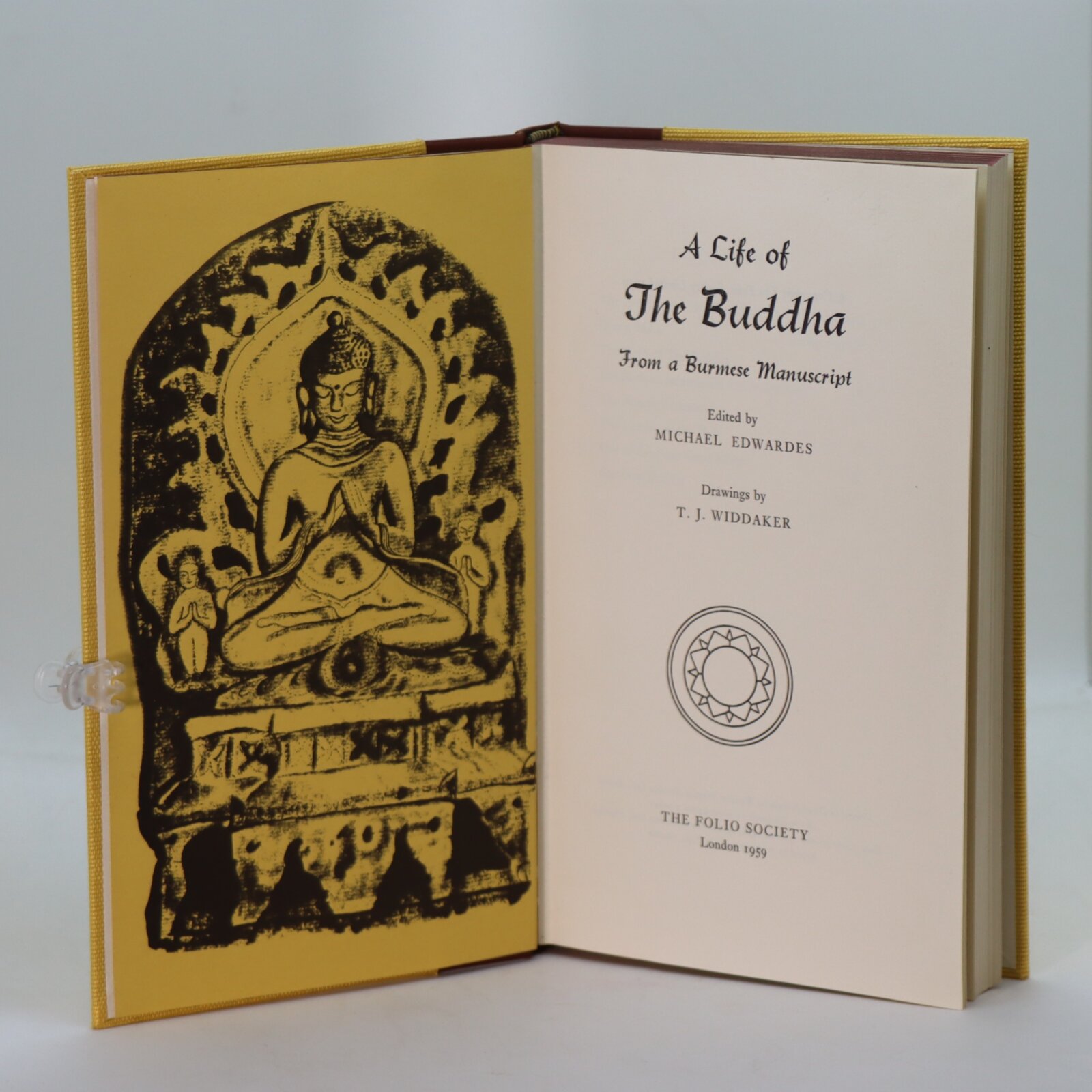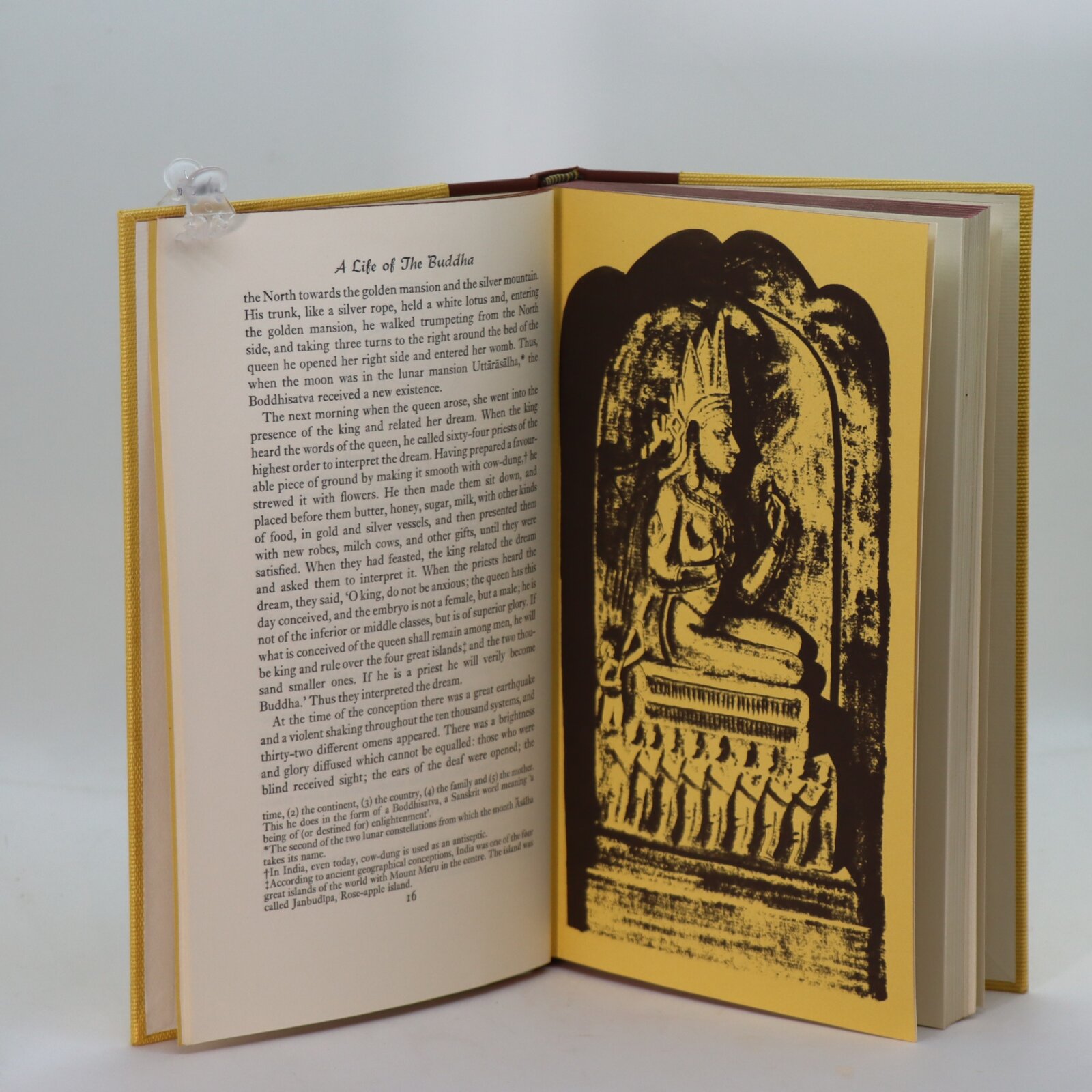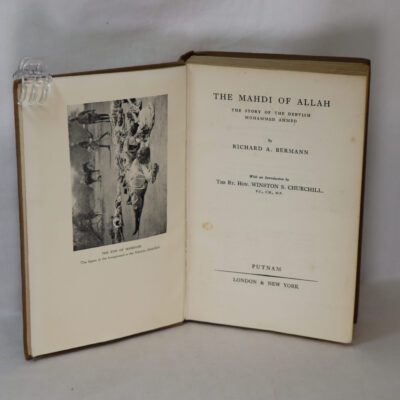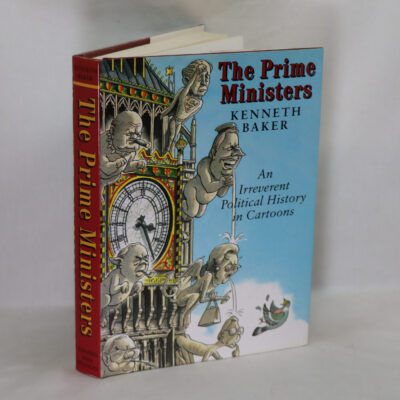A Life of the Buddha.
Printed: 1959
Publisher: Folio Society. London
| Dimensions | 14 × 24 × 3 cm |
|---|---|
| Language |
Language: English
Size (cminches): 14 x 24 x 3
Condition: Fine (See explanation of ratings)
Your items
Item information
Description
In a fitted box. Brown calf spine with gilt title. Yellow cloth boards.
It is the intent of F.B.A. to provide an in-depth photographic presentation of this book offered so to almost stimulate your feel and touch on the book. If requested, more traditional book descriptions are immediately available
The story of the Buddha and his awakening is more than an account of the birth of a religious tradition: it is also one of the great archetypal tales of the spiritual quest, colourful in its many details and thrilling in its depiction of the world transformed by an enlightened human being. Sherab Chödzin Kohn’s retelling of the Buddha’s life is both readable and historically informed and presents the Buddha’s teachings along with the events of his past lives to final nirvana. Library Journal called it “a splendid combination of biography and instruction.” This new edition of the book previously entitled The Awakened One has been updated to include a short history of Buddhism as well as a selection of resources for further reading.
Gautama Buddha, popularly known as the Buddha (also known as Siddhattha Gotama or Siddhārtha Gautama or Buddha Shakyamuni), was an ascetic, a religious leader and teacher who lived in ancient India (c. 6th to 5th century BCE or c. 5th to 4th century BCE). He is regarded as the founder of the world religion of Buddhism, and revered by Buddhists as an enlightened being, who rediscovered an ancient path to freedom from ignorance, craving and the cycle of rebirth and suffering. He taught for around 45 years and built a large following, both monastic and lay. His teaching is based on his insight into the arising of suffering or dissatisfaction and its ending—the state called Nirvana (lit. vanishing or extinguishing).
The Buddha was born into an aristocratic family in the Shakya clan, but eventually renounced lay life. According to Buddhist tradition, after several years of mendicancy, meditation, and asceticism, he awakened to understand the workings of the cycle of rebirth and how it can be escaped. The Buddha then travelled throughout the Gangetic plain teaching and building a religious community. The Buddha taught a middle way between sensual indulgence and the severe asceticism found in the Indian śramaṇa movement. He taught a training of the mind that included ethical training, self-restraint, and meditative practices such as jhana and mindfulness. The Buddha also critiqued the practices of Brahmin priests, such as animal sacrifice and the caste system.
A couple of centuries after his death he came to be known by the title Buddha, which means “Awakened One” or “Enlightened One”. Gautama’s teachings were compiled by the Buddhist community in the Vinaya, his codes for monastic practice, and the Suttas, texts based on his discourses. These were passed down in Middle-Indo Aryan dialects through an oral tradition. Later generations composed additional texts, such as systematic treatises known as Abhidharma, biographies of the Buddha, collections of stories about the Buddha’s past lives known as Jataka tales, and additional discourses, i.e. the Mahayana sutras.
Condition notes
Want to know more about this item?

Share this Page with a friend












